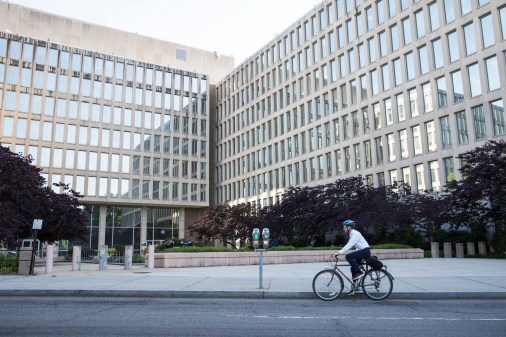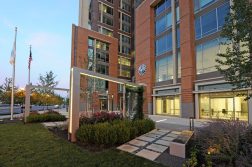Breast cancer geneticist, ‘bionic eye’ creator among National Medal winners
The latest winners of the National Medal of Science and National Medal of Technology and Innovation include doctors, physicists and mathematicians, being honored for groundbreaking work at a number elite universities, such as Harvard, Princeton, Yale, MIT and Stanford.
Seventeen people will be honored overall, with nine receiving the National Medal of Science and eight receiving the National Medal of Technology and Innovation.
The National Medal of Science has been awarded by the National Science Foundation since 1959. Nominations come from from a committee of appointees based on their extraordinary knowledge in and contributions to chemistry, engineering, computing, mathematics, and the biological, behavioral and physical sciences.
The National Medal of Technology and Innovation has been awarded by the U.S. Patent and Trademark Office since 1980, with an independent committee representing the private and public sectors submitting recommendations to the president.
The winners of the National Medal of Science are:
- Paul Alivisatos, Director of the Lawrence Berkeley National Laboratory: Alivisatos is known as a pioneer in nanomaterials, with his work on nanocrystals leading to breakthroughs in the biomedical and renewable energy fields.
- Michael Artin, MIT: Contributed to various algebraic theorems, including the Artin Stacks and Artin-Mazur zeta function
- Albert Bandura, Stanford University: A psychologist who helped move a line of study, behaviorism, into what is now known as cognitive psychology. Also helped create the social learning theory, formed from his famous Bobo Doll experiment
- Stanley Falkow, Stanford University School of Medicine: A microbiologist whose work was based on studying how infectious microbes interact with host cells, which led to various clinical applications including a new vaccine for whooping cough
- Shirley Ann Jackson, Rensselaer Polytechnic Institute: Was the first African-American woman to earn a doctorate at MIT, studying nuclear physics. Spent time working for the European Organization for Nuclear Research (CERN) in Switzerland. Was chairwoman of the Nuclear Regulatory Commission from 1995 to 1999.
- Rakesh Jain, Harvard Medical School: The professor of tumor biology discovered an alternative use for cancer drug Avastin, inhibiting blood vessels in tumors from growing in order to improve the effects of chemotherapy
- Mary-Claire King, University of Washington: Her work in genetics led to the discovery of the BRCA-1 and BRCA-2 genes, known as the “breast cancer gene.” Also spent time researching the genetic causes of hereditary deafness.
- Simon Levin, Princeton University: This biology professor is known for using mathematics to study the macroscopic (large enough to be visible to the naked eye) patterns of ecosystems
- Geraldine Richmond, University of Oregon: The presidential chair of science and chemistry at the university, she is known for her research in chemical and physical processes that occur in complex surfaces, such as water’s surface layer.
The winners of the National Medal of Technology and Innovation are:
- Joseph DeSimone, UNC-Chapel Hill: His work in nanotechnology lead to breakthroughs in things like the manufacturing process of a drug-eluting stent that can be absorbed by the body and 3-D printing technology.
- Robert Fischell, University of Maryland: A physicist, inventor and holder of over 200 patents, he’s helped create pacemakers that can be charged with radio waves, implantable insulin pumps and feedback systems that provide early warning of epileptic seizures and heart attacks.
- Arthur Gossard, University of California-Santa Barbara: Discovered the fractional quantum Hall effect, a major research topic in particle matter physics.
- Nancy Ho, Purdue University: Chemical engineer that advanced biofuels and renewable energy by creating a unique yeast that can produce cellulosic ethanol.
- Chenming Hu, University of California-Berkeley: Professor of Microelectronics known for setting standards on 3-D transistors
- Mark Humayun, University of Southern California: Helped develop an active epiretinal prosthesis, better known as a “bionic eye,” for people suffering from degenerative vision diseases
- Cato Laurencin, University of Connecticut: Internationally known for work in regenerative engineering, including revolutionary ways to treat musculoskeletal injury. His work on regenerating knee ligament tissue is in clinical trials in Europe.
- Jonathan Rothberg, Yale University: Geneticist who oversaw the team that was the first to fully sequence the human genome.
“Science and technology are fundamental to solving some of our nation’s biggest challenges,” President Barack Obama said in a release. “The knowledge produced by these Americans today will carry our country’s legacy of innovation forward and continue to help countless others around the world. Their work is a testament to American ingenuity.”
The recipients will be honored in a presidential ceremony in 2016, the White House announced Tuesday.






